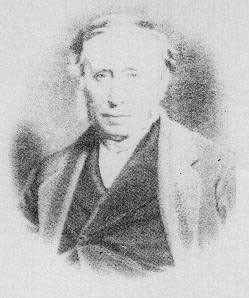| James Syme  Born: 7-Nov-1799 Born: 7-Nov-1799
Birthplace: Edinburgh, Scotland
Died: 26-Jun-1870
Location of death: Edinburgh, Scotland
Cause of death: unspecified
Gender: Male
Race or Ethnicity: White
Occupation: Doctor Nationality: Scotland
Executive summary: Leading Scottish surgeon Scottish surgeon, born at Edinburgh on the 7th of November 1799. His father was a writer to the signet and a landowner in Fife and Kinross, who lost most of his fortune in attempting to develop the mineral resources of his property. James was sent to the high school at the age of nine, and remained until he was fifteen, when be entered the university. For two years he frequented the arts classes (including botany), and in 1817 began the medical curriculum, devoting himself with particular keenness to chemistry. His chemical experiments led him to the discovery that "a valuable substance is obtainable from coal tar which has the property of dissolving india-rubber", and could be used for waterproofing silk and other textile fabrics -- an idea which was patented a few months afterwards by Charles Mackintosh, of Glasgow. In the session 1818-19 Syme became assistant and demonstrator of the dissecting room of Robert Liston, who had started as an extra-mural teacher of anatomy in competition with his old master, Dr. John Barclay; in those years he held also resident appointments in the infirmary and the fever hospital, and spent some time in Paris practicing dissection and operative surgery. In 1823 Liston handed over to him the whole charge of his anatomy classes, retaining his interest in the school as a pecuniary venture; the arrangement did not work smoothly, and a feud with Liston arose, which did not terminate until twenty years later, when the latter was settled in London. In 1824-25 he started the Brown Square school of medicine, but again disagreed with his partners in the venture. Announcing his intention to practice surgery only, Syme started a surgical hospital of his own, Minto House hospital, which he carried on from May 1829 to September 1833, with great success as a surgical charity and school of clinical instruction. It was here that he first put into practice his method of clinical teaching, which consisted in having the patients to be operated or prelected upon brought from the ward into a lecture-room or theater where the students were seated conveniently for seeing and taking notes. His private practice had become very considerable, his position having been assured ever since his amputation at the hip joint in 1823, the first operation of the kind in Scotland. In 1833 he succeeded James Russell as professor of clinical surgery in the university. Syme's accession to the clinical chair was marked by two important changes in the conditions of it: the first was that the professor should have the care of surgical patients in the infirmary in right of his professorship, and the second, that attendance on his course should be obligatory on all candidates for the medical degree. When Liston removed to London in 1835 Syme became the leading consulting surgeon in Scotland. On Liston's death in 1847 Syme was offered his vacant chair of clinical surgery at University College, London, and accepted it. He began practice in London in February 1848; but early in May the same year difficulties with two of his colleagues at Gower Street and a desire to "escape from animosity and contention" led him to throw up his appointment. He returned to Edinburgh in July, and was reinstated in his old chair, to which the crown authority had meanwhile found a difficulty in appointing. The judgment of his friends was that "he was always right in the matter, but often wrong in the manner, of his quarrels." In 1849 he broached the subject of medical reform in a letter to the lord advocate; in 1854 and 1857 he addressed open letters on the same subject to Lord Palmerston; and in 1858 a Medical Act was passed which largely followed the lines laid down by himself. As a member of the general medical council called into existence by the act, he made considerable stir in 1868 by an uncompromising statement of doctrines on medical education, which were thought by many to be reactionary; they were, however, merely an attempt to recommend the methods that had been characteristic of Edinburgh teaching since William Cullen's time -- namely, a constant reference of facts to principles, the subordination (but not the sacrifice) of technical details to generalities, and the preference of large professional classes and the "magnetism of numbers" to the tutorial system, which he identified with "cramming." In April 1869 he had a paralytic seizure, and at once resigned his chair; he never recovered his powers, and died near Edinburgh on the 26th of June 1810.
Syme's surgical writings were numerous, although the terseness of his style and directness of his method saved them from being bulky. In 1831 he published A Treatise on the Excision of Diseased Joints (the celebrated ankle-joint amputation is known by his name). His Principles of Surgery (often reprinted) came out a few months later; Diseases of the Rectum in 1838; Stricture of the Urethra and Fistula in Perineo in 1849; and Excision of the Scapula in 1864. In 1848 he collected into a volume, under the title of Contributions to the Pathology and Practice of Surgery, thirty-one original memoirs published in periodicals from time to time; and in 1861 he issued another volume of Observations in Clinical Surgery. Syme's character is not inaptly summed up in the dedication to him by his old pupil, Dr. John Brown, of the series of essays Locke and Sydenham: "Verax, capax, perspicax, sagax, efficax, tenax." University: University of Edinburgh
Do you know something we don't?
Submit a correction or make a comment about this profile
Copyright ©2019 Soylent Communications
|